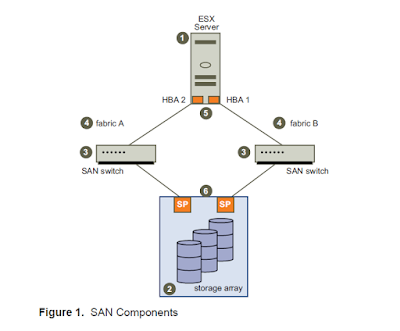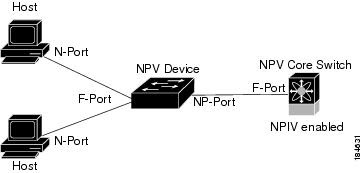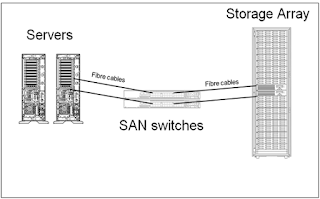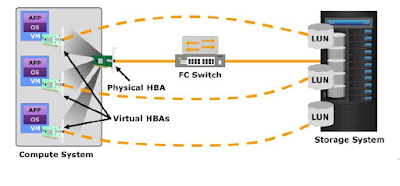Details Explanation Of SAN Storage Architecture
This blog explains What is SAN storage how SAN storage works. What are the SAN Storage components and how they connects to each other.
What is SAN Storage ?
SAN storage stands for Storage Area Network. A SAN is a specialized high‐speed network of storage devices and SAN switches connected to computer systems called as Host or Server via Fiber optic cables. Host uses the storage from storage arrays as if its local to Host. As the data communication happens via fiber optics the data speed is high in comparison to NAS storage.
Components Of SAN Storage
Below is a very simple architecture diagram of SAN storage which has all of Storage Area Network.

Host Layer Of SAN Storage
Host layer of SAN Storage has servers or host. Hosts are basically a hardware having its own resources like CPU, Memory, Disk storage and an Operating system running on it. Along with these it has also dual HBA card which connects to the Fabric Layer of SAN Network.
What is Fabric In SAN Storage
Fabric layer or a Fabric of SAN storage consist of one or more SAN switch. SAN Switch provides a connections points in SAN architecture. All Host connects to SAN switch and Storage Array also connects to same SAN switch. Thus it act as mediator between Host and Storage.
Typical SAN network has two fabric for high redundancy. In case if one Fabric goes down then other fabric takes care of the data flows in storage area network.
Storage Layer in Storage Area Network
In storage layer of Storage Area Network storage arrays are present where data resides in physical disks. Storage Array consist of physical disk. These disks are grouped logically using special technology called RAID for data protection. These RAID helps in data recovery whenever a disk failure occurs. There various types of RAID type. Depending on requirement specific RAID type is selected for creating raid group. Common RAID type are RAID 5 and RAID 6.
Most of storage arrays has Dual storage processors (SPs) which are the front end of the storage array. These SP has front end IO module which has FC ports. These FC ports connects to SAN switch via FC cables.
Below is an architecture diagram of typical SAN storage which has all components of Storage Area Network with redundant setup.
How SAN Storage Works
When a host from a host layer wants to access a storage device on the SAN, it sends out a block‐based access request for the storage device. SCSI commands are encapsulated into FC packets. Then the Host HBA transmits the FC request to the Storage layer via Fabric.
From Fabric layer SAN Switch then sends this request to Storage Array. In Storage Array SP receives the request, process it and then sends an acknowledgement back to the host through same path.
For more detail explanation on this topic please watch this YouTube Video. For more such videos on SAN and NAS technology Subscribe to the channel.










